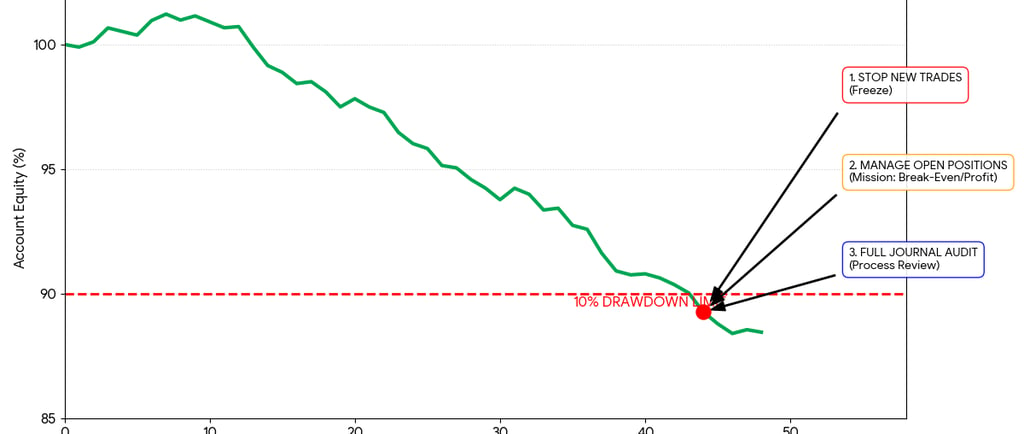The 10% Drawdown Rule
Your Mandatory Fail-Safe Against Catastrophic Loss
Sumit Mehrotra
11/8/20252 min read


The moment a trader adopts sophisticated, high-risk techniques like Hedging, Dollar-Cost Averaging (DCA), or Martingale, they also adopt a fundamental, non-negotiable truth: drawdowns are inevitable. These strategies, while brilliant in their design to capture eventual market reversals or stabilise positions, inherently require accepting and accumulating temporary floating losses. For this reason, implementing an ironclad risk management plan is not optional—it is the only firewall that stands between a planned recovery and a catastrophic account blow-up.
This critical firewall is the 10% Maximum Capital Drawdown Rule. The logic behind the 10% figure is rooted in the unforgiving mathematics of loss recovery: a 50% loss requires a 100% gain to recover, a feat that is exceptionally difficult to achieve consistently. By contrast, a 10% loss only requires an 11.1% gain to break even. Stopping at 10% is an immediate, preemptive act of capital preservation, recognising that intervention is exponentially easier and less emotionally costly at shallow depths than at deep ones.
When your total trading equity—your current account value, including all floating P&L—drops by 10% from its last peak, you must transition instantly from an active trader to a Chief Risk Officer performing mandatory damage control. The first action is an immediate freeze on all new trade entries. This prevents the bleeding from worsening and ensures you don't take on any new, unmanaged risk while you are in a psychologically compromised state.
Once the bleeding stops, your focus shifts to strategically managing your open positions. The sole mission is to work tirelessly towards closing those open trades at break-even or, ideally, in profit. This is where the structural advantage of Hedging or DCA must be utilised with precision.
Finally, the most critical step is the Full Journal Audit. Once the trades are closed and the account is stabilised, you must perform a cold, objective review to find the root cause of the drawdown. This audit moves beyond simple P&L to address the process: Did I adhere to my size limits? Was I trading outside of my approved hours? Was my emotional rating high before the streak began? The trading account must remain dormant until this audit is complete, the flaw is identified, and a new, specific rule is documented to prevent the same drawdown from recurring. This disciplined, sequential protocol is the ultimate self-imposed fail-safe for ensuring that even the most complex strategies result in a sustainable career, not a quick flameout.
© 2025. All rights reserved






Company Registration Number 16824545